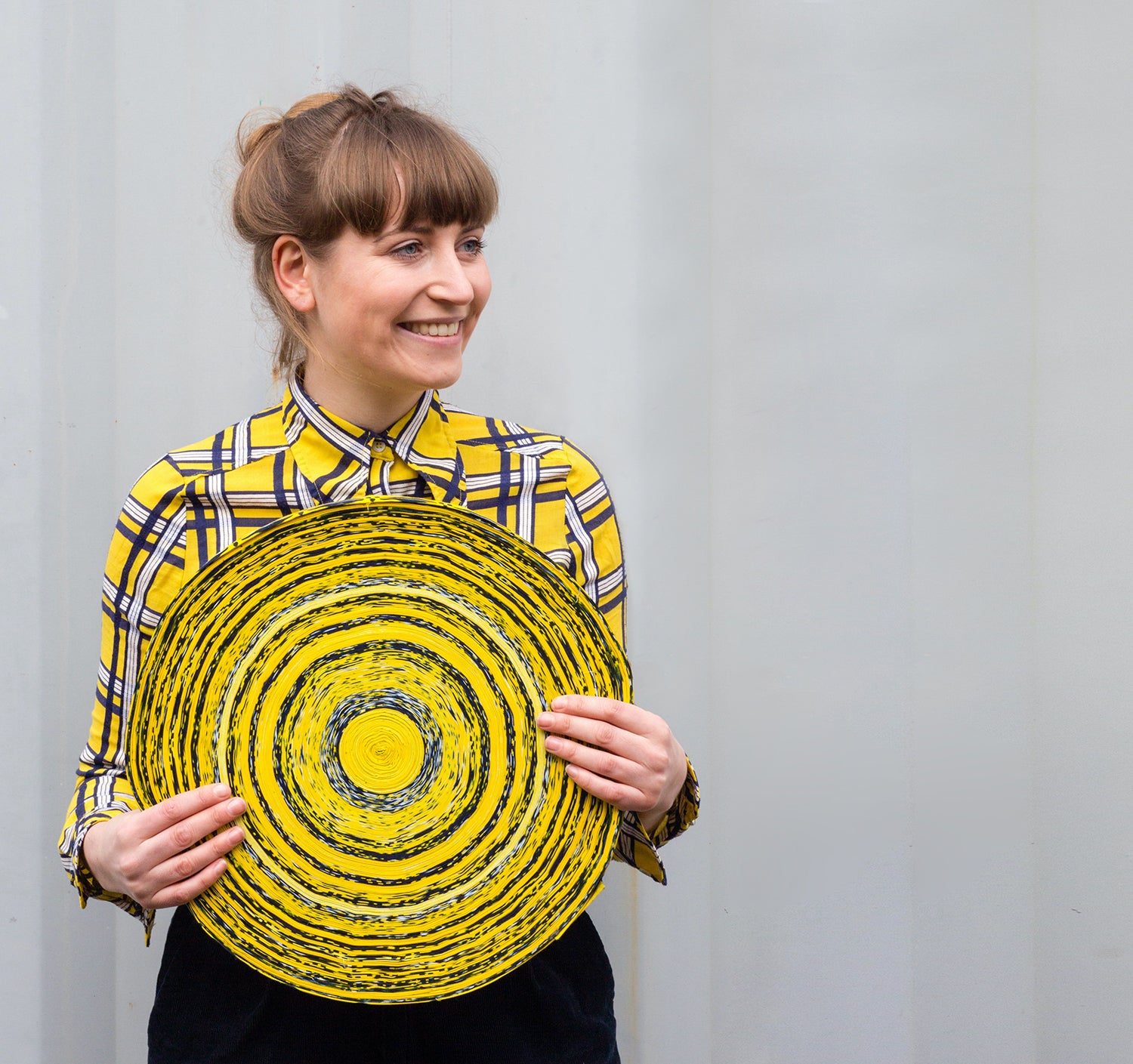A “waste not, want not” philosophy has given a Dutch textile designer an innovative approach to design—and led to a collaboration with Adidas that explores reuse in surprising ways.
The biggest influence on experimental textile designer Simone Post has been an unlikely one: trash. While studying fashion design in the Netherlands, learning about the industry’s waste prompted her to change course. “I was curious about sustainable alternatives to materials like polyester and cotton, and one of my professors told me that fashion is inherently not sustainable, so if I was that concerned about it, I might want to consider another profession,” says Post. She took the advice, transferring to a new university to study textile design. A deep concern with the life cycle of textiles had taken hold.
After graduating from Design Academy Eindhoven in 2015, Post got an internship at the Dutch fashion textile company Vlisco, which makes vibrant prints for the West African market. She was immediately struck by the amount of misprinted fabric that was destroyed each year. “I saw how much of this beautiful material was left over and I knew I had to do something with it,” she says. The company agreed that she could find a new use for the discarded textiles, but under the condition the prints wouldn’t go to market in their original form. “It was a unique challenge to be given a pre-consumer material that is already beautiful, and to have to think of an entirely new use for it,” she says. She spent months thinking about what she could do with the fabric she’d been given.

BOH subscribers and BOH Insiders.










































